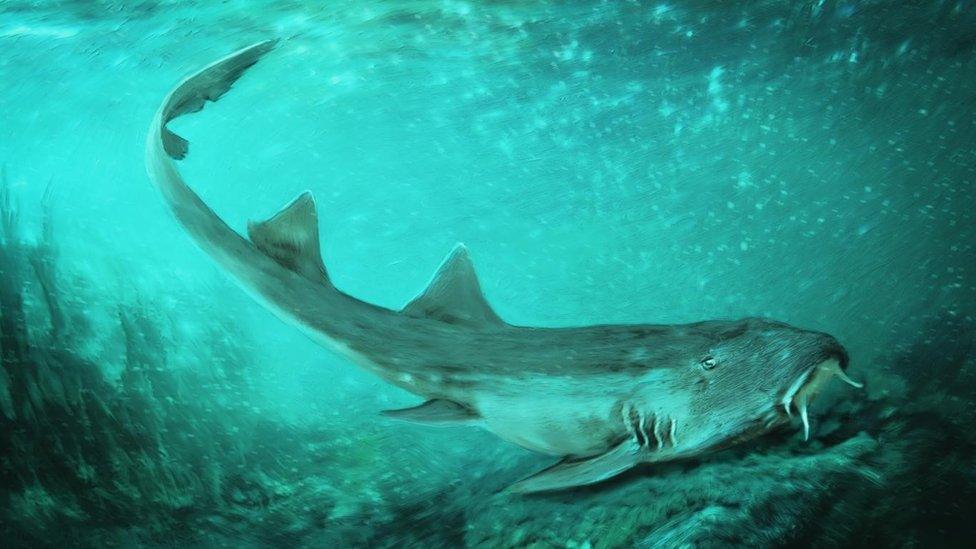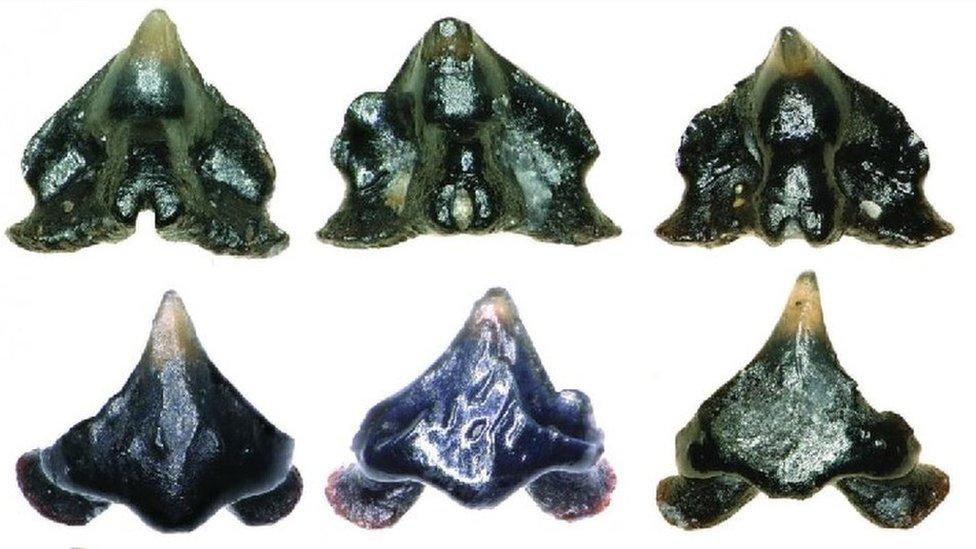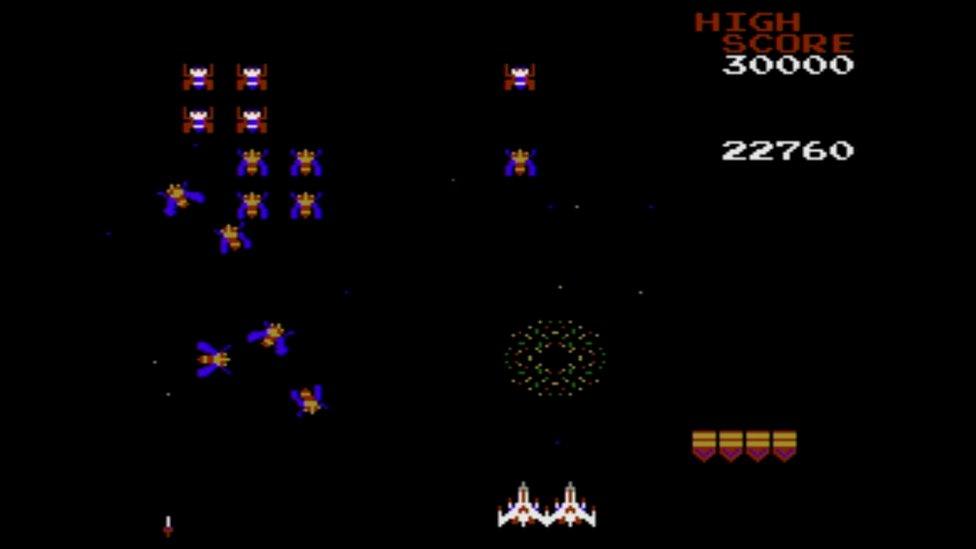Fossil shark named after 80s video game
- Published

Artwork: Galagadon was a freshwater shark from the time of the dinosaurs
A newly discovered species of ancient shark has been named after a 1980s arcade game.
The shark swam in the rivers of what is now South Dakota, US, about 67 million years ago, living alongside iconic dinosaur species such as T. rex.
It's been named Galagadon, after the 1981 Japanese-US game Galaga, because its teeth resemble the spaceships in the game.
The specimen is described in the Journal of Paleontology.

"It may seem odd today, but about 67 million years ago, what is now South Dakota was covered in forests, swamps and winding rivers," said co-author Terry Gates, from North Carolina State University.
The tiny teeth - each measuring less than a millimetre across - were discovered in the sediment left behind when palaeontologists at the Field Museum in Chicago uncovered the bones of "Sue," currently the most complete T. rex specimen ever described.
However, said Dr Gates, "Galagadon was not swooping in to prey on T. rex, Triceratops, or any other dinosaurs that happened into its streams. This shark had teeth that were good for catching small fish or crushing snails and crawdads (crayfish)."

The teeth resemble the spaceships (bottom, white and red) in Galaga
The classic arcade game, Galaga, pit insectoid alien spaceships against a spacecraft at the bottom of the screen - controlled by the player - which bears a strong resemblance to the shark teeth.
Galagadon nordquistae, as it has been named, was relatively small - about 30cm (12ins) to 45cm (18ins) - and was related to modern carpet sharks, such as the wobbegong.